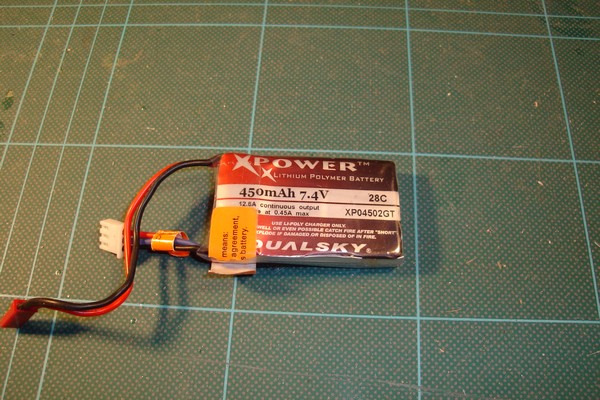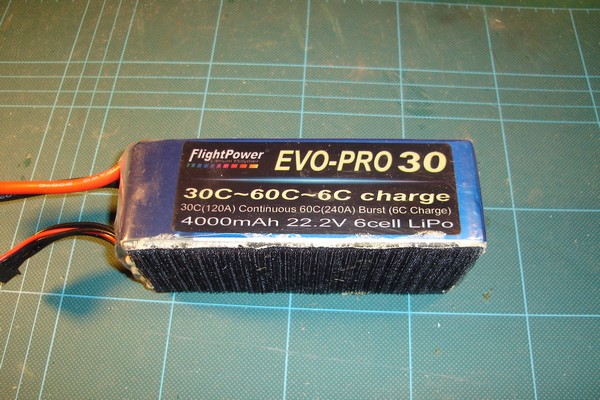Hhmmmmmm,……………I have a feeling that this is going to be a long post, so just hang on while I go and put the kettle on……………
I’m not too sure where you are coming from with your question John. As it stands your assumption is incorrect.
Let me give you some facts and hopefully you will be able to put together a concept of how the system works in your head.
I have no idea what you already know and don’t know, so I’ll assume you know nothing. (Forgive me if I’m wrong on that point)
For the sake of ease of understanding I’m going to generalize. So let me state first and foremost that some of the things I’m going to write might be only 95% correct. i.e. there may be some exceptions to what I say.
The maximum power that any battery can produce at any given moment is equal to the voltage of the battery x the total current it can produce,…. at a given time.
Lets talk about Li-Po’s and look at the following picture.

Here is a little two cell Li-Po of the type you already have.
The markings show that it’s basic current capacity is 450mAh. Just to remind ourselves what that means………it means that the battery could discharge 450milli amps of current over the course of one hour. This is known as it’s 1C rating. (‘C’ standing for capacity)
However the marking “28C” tells us that this same battery is also capable of discharging up to 28 times it’s 1C rating of 450milli amps, (but for a much shorter period of time of course.)
So, for a short while this little battery could discharge 28 x 450mA.
That equals 12600 milli amps, or 12.6amps. (This figure is also shown on the battery.)
“This is all very well,” I hear you say, “but it’s only referring the battery’s current, how much power will it produce?”
Well, we know that power (measured in Watts) = VxA
The nominal voltage of this battery is 7.4volts. The max rate of discharge is 12.6amps, so it’s max power output is 7.4 x 12.6 = 93.24 watts
Therefore,……………oooppss the kettle has just boiled, wait while I make a cuppa!
(Slurp) Ar! that’s better.

You can’t beat a nice cup of Earl Grey. It’s so refreshing!

Now where was I?…… Oh yes, we were doing some maths weren’t we.
So the maximum amount of power in the “Power Train” system that this battery is connected to can never be more than 93.24watts.
Now let’s suppose we were using a 3cell Li-Po (11.1volts) which could only supply a max current of 8.4amps. How much power would it produce? Surprise Surprise 11.1 x 8.4 = 93.24 watts
So both batteries produce the same amount of power, but one of them does it by way of using less current. (But a higher voltage)
So it is possible to derive higher power amounts without drawing more current. The trade off is that the system has to be able to handle higher voltages. (Hang in there John, we're nearly home

)
If you have managed to stay awake through all this I’d be very surprised, but just in case you have here comes the final bit.
The more amps a device uses the hotter it gets. So there is always an incentive to keep the current down. However as we’ve seen the esc and motor have to be able to handle higher voltages.
There, well done John, you can go to sleep now. ZZZZzzzzzzzzzz
BUT just in case you’re still awake here’s another Li-Po.

It says it can produce 240amps. How is that so when it’s only a 4000mAh battery. And what do you think it’s max power output is? (Answer = 5.328Kw but how do I know that?)
Sleep tight!
K